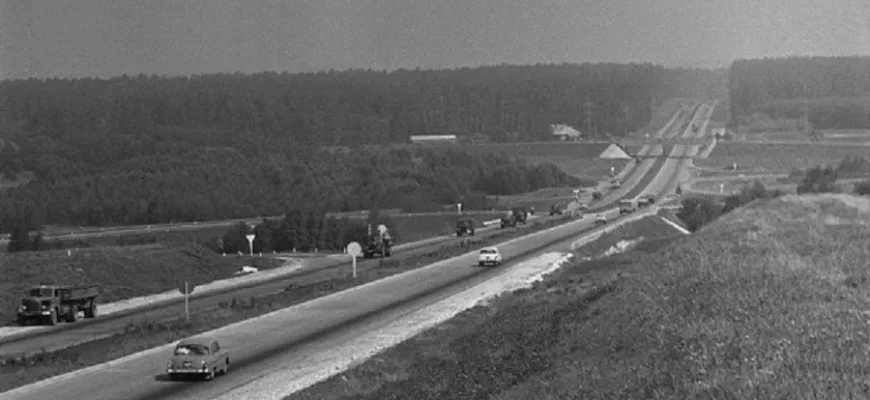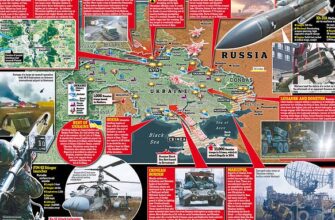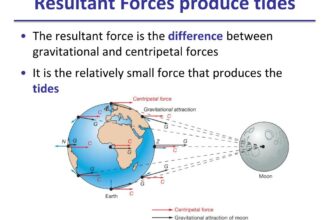Moscow, a metropolis perpetually in motion, often sees its arterial roads performing a delicate dance between efficient transit and complete gridlock. Recently, this intricate choreography was abruptly interrupted on the **Moscow Ring Road (MKAD)**, specifically at the 80th kilometer of its outer side. An incident, all too common yet always disruptive, saw a truck overturn after a collision with a passenger vehicle, bringing a significant portion of the city`s vital transportation artery to a near standstill.
The Anatomy of an Urban Disruption
The incident itself was straightforward in its mechanics: a passenger car collided with a cargo truck. However, the consequences were anything but simple. The force of the impact caused the truck to overturn, effectively transforming a routine segment of the highway into an unexpected barrier. Multiple lanes were immediately rendered impassable, creating an instant bottleneck on one of the busiest roads in Europe.
Thanks to Moscow`s extensive network of **surveillance cameras**, the entire sequence of events was captured. While such footage offers invaluable data for accident investigation and perhaps, more critically, for understanding traffic dynamics, it also serves as a stark visual reminder of the thin line separating smooth passage from significant disruption on urban highways.
MKAD: Moscow`s Circulatory System Under Stress
The MKAD is not merely a road; it is the **lifeline of Moscow`s logistics and daily commute**. Spanning approximately 109 kilometers, this multi-lane highway encircles the city, connecting numerous districts, industrial zones, and residential areas. Its constant flow of vehicles—from nimble passenger cars to colossal cargo trucks—is a testament to the city`s economic vitality. Yet, this very importance makes it acutely vulnerable to disruptions.
“On a road designed for perpetual motion, even a momentary lapse can trigger a cascade of delays. The MKAD, in its relentless pursuit of urban connectivity, occasionally reminds us that physics and human error have their own, often inconvenient, schedules.”
When an incident like an overturned truck occurs, the effects are immediate and far-reaching. Traffic quickly backs up, not just for kilometers on the MKAD itself, but also on the feeder roads leading to it. What began as a local collision rapidly metastasizes into a regional issue, highlighting the intricate interdependencies of a modern city`s infrastructure.
Beyond the Skid Marks: The Broader Implications
While the immediate concern following such an event is often the physical damage and potential injuries (details of which were not available in the initial report), the economic and logistical repercussions are substantial:
- Economic Loss: Businesses face delays in deliveries, commuters arrive late for work, and perishable goods risk spoilage. The cumulative financial impact of even a few hours of gridlock can be considerable.
- Emergency Response Strain: Emergency services, including traffic police, ambulances, and towing companies, are stretched thin, managing the accident scene while also navigating the very congestion caused by the incident.
- Environmental Impact: Idling engines in massive traffic jams contribute to increased fuel consumption and higher emissions, adding a layer of environmental concern to the immediate chaos.
Driving Safely in a High-Stakes Environment
This incident, like countless others on busy highways globally, underscores the critical importance of **driver awareness and adherence to safety protocols**. Large vehicles, owing to their mass and momentum, present unique challenges. A collision involving a truck typically carries a higher risk of severe consequences, not just for those directly involved, but for the wider traffic ecosystem.
For all drivers, operating on a high-speed, multi-lane road like the MKAD demands constant vigilance, proper spacing, and anticipation of potential hazards. The presence of surveillance cameras, while effective for post-incident analysis, also serves as a subtle, pervasive reminder that actions on the road have observable, and often public, consequences.
A Constant Vigil for Urban Mobility
The overturned truck on the MKAD is more than just a fleeting news item; it`s a recurring narrative in the story of urban development and modern transportation. It reminds city planners, traffic authorities, and everyday drivers alike that maintaining the delicate balance of mobility requires an ongoing, collective effort. From robust infrastructure and vigilant law enforcement to responsible driving and prompt emergency response, every element plays a crucial role in keeping the gears of a megacity turning smoothly.
As Moscow continues to expand and its population grows, such incidents will inevitably arise. The challenge, therefore, lies not merely in clearing the wreckage, but in continually learning from these disruptions to build a more resilient, safer, and ultimately more predictable urban transport system – even if the unpredictability of human nature remains a charming, albeit costly, variable.







